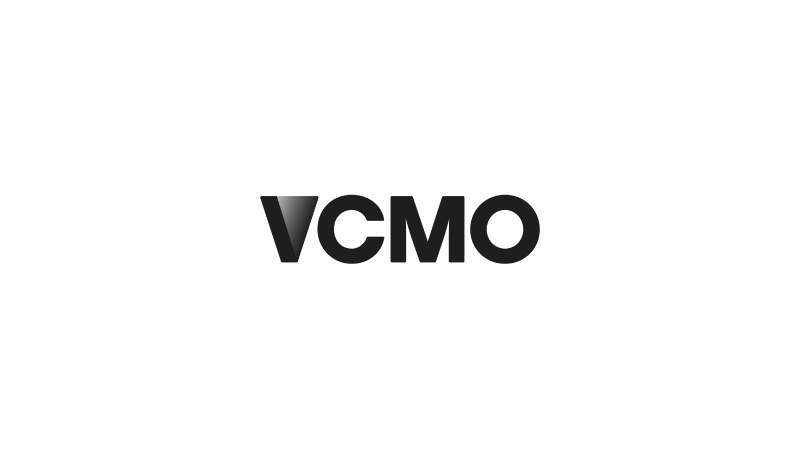Learn when to hire a Fractional CMO or CRO, the KPIs that define success, and how both roles can work together to build predictable revenue growth.
Introduction — Why This Debate Matters Now
The debate between the Fractional CMO (Chief Marketing Officer) and Fractional CRO (Chief Revenue Officer) has become one of the most contested topics in commercial leadership. As economic conditions tighten and accountability for growth intensifies, boards and CEOs are reassessing which roles truly drive revenue. In many organisations, traditional marketing leadership has been deprioritised in favour of commercially oriented CROs who promise clearer linkage between strategy and sales impact.
This shift reflects a broader structural change. Buying cycles are longer, markets more crowded, and customer acquisition more expensive. Growth now demands tighter alignment across marketing, sales and customer success — breaking down the silos that historically separated brand, demand generation and revenue operations. CROs have emerged as credible integrators of this ecosystem, with responsibility for the entire customer journey from first touch to renewal.
Yet, the narrative that CROs can — or should — replace CMOs is overly simplistic. While CROs excel in revenue orchestration and forecasting discipline, they are not always equipped to develop the brand, messaging and long-term demand creation required to scale sustainably. Equally, CMOs who lack a commercial grounding is sales risk focusing too narrowly on campaigns, content and creative output without demonstrable impact on revenue.
Rather than choosing between them, a growing number of businesses are exploring hybrid and complementary models. In this configuration, the CMO builds market positioning and demand, while the CRO converts and expands that demand efficiently. Understanding this balance is essential for leaders deciding where to invest limited senior-level resource — and when a fractional engagement may offer the most logical path.

“The CRO–CMO debate reflects a deeper shift: growth now requires tight orchestration across brand, demand and revenue operations. The question is no longer which role is more important, but where the organisation’s primary constraint lies — creating demand or monetising it.”
What Is a Fractional CMO?
A Fractional Chief Marketing Officer (CMO) is an experienced marketing leader who operates on a part-time or contract basis to provide strategic direction without the cost and permanence of a full-time executive hire. Their core remit is to define the organisation’s market position, brand strategy and demand-generation engine, ensuring that marketing activity is aligned with commercial goals and supported by measurable performance frameworks.
Fractional CMOs typically develop the go-to-market strategy, refine the value proposition, improve segmentation and messaging, and ensure resources are allocated to the channels most likely to drive profitable growth. They bring leadership to in-house teams, agencies and partners, creating structure, clarity and accountability. Because many work across multiple sectors, they provide fresh perspective and cross-market learning, helping organisations avoid narrow thinking and legacy assumptions.
While some CMOs now take on revenue accountability, many focus primarily on generating demand, brand preference and long-term customer value rather than managing the full revenue lifecycle. Their strengths lie in building sustainable positioning, developing differentiated messaging, and architecting high-quality pipeline flow.
This article provides only a high-level summary. For a detailed breakdown of responsibilities, capabilities, KPIs and scenarios where a Fractional CMO is the right choice, please see our in-depth guide: What is a Fractional CMO: The Definitive Guide
What Is a Fractional CRO?
A Fractional Chief Revenue Officer (CRO) is a senior commercial leader engaged part-time to design, coordinate and optimise all revenue-generating functions. Whereas the CMO is primarily accountable for market positioning and demand creation, the CRO is responsible for converting that demand into predictable, scalable and profitable revenue. Their remit typically spans sales, marketing, partnerships and customer success, ensuring that every stage of the customer journey contributes to growth and retention.
Fractional CROs diagnose and improve the commercial operating model by developing playbooks, qualification criteria, sales processes, forecasting, pricing and renewal frameworks. They bring discipline to revenue governance, aligning teams around common definitions, shared KPIs and a unified funnel. This role is particularly valuable where B2B buying cycles are complex, multi-stakeholder and data intensive.
The CRO’s focus is highly operational: reducing friction in handoffs, improving conversion rates, and building revenue predictability. They work closely with sales leadership to strengthen execution, hiring, enablement and coaching. Equally, they connect product, marketing and customer success to ensure that value propositions resonate, onboarding is effective, and customer lifetime value increases.
Unlike the CMO, who prioritises long-term brand and pipeline health, the CRO is measured primarily on near- and mid-term revenue performance. They become a single point of accountability for commercial outcomes, helping CEOs avoid fragmented responsibility across internal functions. As a fractional engagement, they offer flexibility for organisations that require senior-level commercial rigour but are not yet ready — or able — to appoint a full-time CRO.

“Fractional CROs bring structure and commercial discipline to revenue generation. Their strength lies in unifying sales, marketing and customer success under a single operating system — driving predictability, sharper forecasts and lifecycle growth without needing a full-time appointment.”
Rachael Wheatley — Chartered Fractional CMO, VCMO
Fractional CMO vs Fractional CRO — Key Differences
Although both roles contribute to organisational growth, the Fractional CMO and Fractional CRO focus on different parts of the commercial engine. The CMO builds long-term demand, brand preference and market position; the CRO ensures that this demand converts into predictable revenue, margin and retention. Confusion often arises because both roles touch the customer journey — but their starting points, responsibilities and success measures diverge.
The table below highlights the most important distinctions.
Understanding these differences helps leaders evaluate which capability gap is most acute — or whether the optimum model is having both roles collaborate, with one shaping demand and the other monetising it efficiently.
Why the Roles Are Often Confused
The rise of revenue-focused marketing and increasingly complex customer journeys has blurred the traditional boundaries between commercial functions. As a result, organisations — particularly those scaling rapidly — often conflate the remit of the Fractional CMO and Fractional CRO. Several structural and cultural factors contribute to this confusion.
- Both Influence Revenue - Because both roles sit close to revenue generation, many assume they are interchangeable. While the CMO builds market demand and brand strength, the CRO ensures those inputs convert into revenue and expansion.
- Shared Touchpoints Across the Funnel - Both leaders influence awareness, evaluation, conversion and retention, creating natural overlap. Without clarity, companies struggle to distinguish who owns which stage.
- Evolving CMO Mandate - Modern CMOs are increasingly measured on pipeline impact and commercial contribution. This has expanded their scope into areas historically led by sales, increasing perceived similarity with CROs.
- Blurred Job Titles & Internal Maturity - In earlier-stage businesses, marketing and revenue roles are often undefined or consolidated, making distinctions less visible until scale demands clarity.
- Both Claim “GTM Leadership” - Each role impacts the go-to-market (GTM) strategy. Without a structured operating model, ownership of GTM becomes contested territory.
- Lack of Revenue Operations Discipline - Where RevOps (Revenue Operations) is weak or absent, accountability across marketing, sales and customer service becomes fragmented and ambiguous, heightening role confusion.
- CEO Expectations Shift Over Time - Founders often introduce one role to solve immediate challenges, only to expect broader coverage later, diluting remit clarity.
Understanding why these misconceptions arise helps leaders define their needs more precisely — reducing mis-hiring risk and improving commercial alignment.

“Companies confuse CMOs and CROs because both sit close to revenue. The distinction only becomes clear once you map ownership across the customer lifecycle: CMOs create and shape demand; CROs convert, retain and expand it.”
Ruth Napier — Chartered Fractional CMO, VCMO
When You Need a Fractional CMO
A Fractional CMO is most valuable when an organisation needs strategic clarity, stronger market positioning or a more effective demand engine, but is not ready — or does not need — a full-time marketing leader.
Typical signals include unclear value proposition, unfocused marketing activity, inconsistent messaging, or pipeline generation that is overly dependent on founder relationships or outbound sales. Similarly, when marketing budgets are growing but outcomes are not improving, a fractional engagement can help diagnose gaps, rebuild the strategy and create measurement discipline.
Fractional CMOs also support leadership teams entering new markets, preparing for investment, or repositioning their brand. They bring structured planning, resource prioritisation and cross-sector experience to organisations that may have solid executional capability but lack senior strategic direction.
Early-stage firms often hire tactical marketers before strategy is defined, leading to fragmented efforts. A Fractional CMO resolves this by aligning segmentation, proposition, content, channels and metrics.
For a detailed exploration of triggers, capabilities and evaluation criteria, please see our in-depth guide: Signs your business needs a Fractional CMO
When You Need a Fractional CRO
A Fractional CRO is most valuable when commercial performance requires stronger alignment, process, forecasting discipline and cross-functional accountability. While the CMO builds market demand and brand preference, the CRO ensures that demand converts into predictable, scalable revenue. The following scenarios commonly indicate that a Fractional CRO is the right intervention.
- Marketing Generates Leads, but Conversion Is Weak - If pipeline volume is healthy yet deals do not progress, a CRO can diagnose breakdowns at handoff, strengthen qualification criteria and refine sales process to improve conversion and win-rates.
- Sales & Marketing Lack Alignment - Where sales blames marketing for lead quality — and marketing blames sales for poor follow-up — a CRO creates shared definitions, unified KPIs and integrated funnel visibility, reducing friction and improving efficiency.
- Forecasting Is Unreliable - If performance fluctuates unpredictably, pipeline stages lack consistency, or reports vary by team, a CRO establishes consistent operating rhythm, stage exit criteria and forecast governance.
- Growth Has Stalled or Plateaued - When increased sales headcount or marketing spend does not drive incremental revenue, a CRO can identify structural bottlenecks and design a 30-60-90 day plan to restore momentum.
- Expansion Into New Markets or Segments - A CRO evaluates whether the commercial model, messaging and resourcing are appropriate for new territories, advising on sequencing, partner strategy and phased validation.
- Customer Churn Erodes Net Revenue Retention - If acquisition outpaces retention, a CRO connects product, marketing and customer success to strengthen onboarding, value realisation and renewal processes.
- Founders Are Acting as CRO by Default - Where CEOs are managing late-stage deals, key accounts or strategic partnerships, a fractional leader can take ownership and relieve the operational burden.
A CRO is ultimately the right choice when a business requires operational revenue discipline — unified strategy, consistent execution and predictable commercial outcomes.

“A Fractional CRO is most effective when pipeline exists but conversion, forecasting or retention breaks down. Their remit is to remove friction, standardise process and build revenue confidence — particularly where growth has stalled despite strong marketing effort.”
Lydia McClelland — Chartered Fractional CMO, VCMO
Who Should You Hire First? (Decision Logic)
Determining whether to appoint a Fractional CMO or Fractional CRO first depends on where the organisation’s primary commercial constraints lie. Some businesses struggle to generate sufficient market demand, while others generate pipeline but fail to convert or retain it. The table below summarises the most common scenarios and indicates which role is likely to unlock value fastest.
In practice, many organisations ultimately benefit from both roles — typically with the CMO establishing a scalable demand engine and the CRO layering in revenue discipline, forecasting and lifecycle alignment. The sequencing simply reflects the most pressing constraint: creating demand versus monetising demand.
Can Fractional CMOs & CROs Work Together?
Yes — and in many organisations, they should. While the Fractional CMO and Fractional CRO have distinct mandates, their collaboration can create a more coherent and commercially effective go-to-market system. Rather than viewing them as substitutes, leading businesses increasingly treat them as complementary roles with shared accountability for growth.
The CMO brings the upstream perspective: understanding markets, customer needs, segments, messaging and value propositions. They ensure the business knows who to target, why they buy, and how to create demand efficiently. The CRO builds on this foundation by governing the full revenue lifecycle — aligning sales, marketing and customer success to improve conversion, forecasting accuracy, retention and expansion.
When these roles operate in tandem, organisations benefit from a closed-loop growth engine. Insight generated by marketing informs sales playbooks; sales feedback improves messaging and product positioning; customer success data identifies expansion and cross-sell opportunities. The result is a system where demand is generated intentionally — and monetised predictably.
This model also strengthens commercial governance. Shared KPIs, unified funnel visibility and RevOps discipline reduce friction and improve decision quality. Neither role becomes a bottleneck because both share accountability for revenue outcomes.
In mid-market companies, a combined fractional model offers a practical route to senior capability without the overhead of two full-time executives. The CMO drives strategic clarity and demand; the CRO converts, retains and expands that demand. Together, they create the conditions for sustainable, scalable growth.
“When CMOs and CROs work as a pair, you gain a full-funnel growth system. The CMO fuels the engine with clear positioning and demand; the CRO turns that into predictable revenue and lifetime value. Few models scale more effectively.”
Benefits of Combining Both Roles
Engaging a Fractional CMO and Fractional CRO together enables organisations to build a fully integrated commercial engine — one that balances long-term market development with near-term revenue performance. While each role adds value independently, the greatest commercial impact is often achieved when both operate in tandem under a unified growth thesis.
1) Holistic Go-to-Market (GTM) Alignment
The primary advantage is holistic go-to-market alignment. The CMO defines the market, crafts the value proposition and builds demand. The CRO ensures this demand is converted efficiently, with rigorous qualification, disciplined forecasting and structured handoffs to customer success. This seamless connection between brand, pipeline and revenue improves predictability and reduces waste.
2) Shared Accountability
A second benefit is shared accountability for outcomes. Rather than marketing optimising for MQL (marketing qualified lead) volume, and sales optimising for closed deals, both functions anchor around lifecycle metrics — from acquisition cost and pipeline velocity to retention and net revenue retention. This reduces siloed behaviour and creates a shared language around growth.
3) Resource Allocation
Combined leadership also strengthens resource allocation and decision quality. The CMO ensures market insight guides investment; the CRO validates execution feasibility and revenue impact. Together, they help businesses prioritise initiatives that deliver true commercial return.
4) Scalable maturity
Finally, this model supports scalable maturity. As the organisation evolves, the CMO can lean further into brand and product-led growth, while the CRO deepens operational discipline and expansion strategy. The result is a balanced, future-proof commercial capability that grows with the business rather than ahead of it.
“Deploying both roles unlocks complementary strengths: market insight and brand on one side; operational rigour and revenue accountability on the other. Together, they create shared goals, cleaner handoffs and a coherent GTM strategy anchored in commercial outcomes.”
Rachael Wheatley — Chartered Fractional CMO, VCMO
Risks of Choosing the Wrong Role
Hiring a Fractional CMO when the business actually needs a CRO — or vice-versa — can create structural misalignment that slows growth, dilutes accountability and obscures the true source of commercial under-performance. The risks below illustrate the consequences of mis-sequencing these roles.
- Misdiagnosis of the Growth Constraint - If the organisation struggles to convert pipeline yet hires a CMO, the core sales and RevOps issues remain unresolved.
- Wasted Budget & Inefficient Spend - Investing in campaigns when the sales engine is broken, or building sales capability without market demand, reduces ROI.
- Fragmented Accountability - Assigning revenue accountability to the wrong role creates blurred ownership and slows decision-making.
- Poor Cross-Functional Alignment - Misaligned leadership reinforces silos between marketing, sales and CS — worsening the problem the hire was meant to fix.
- Failure to Demonstrate Commercial Impact - CMOs without revenue-system support struggle to prove contribution; CROs without demand creation lack fuel.
- Leadership Displacement & Turnover - A mis-hired role often becomes scapegoated, leading to churn or repeated restructuring.
- Strategic Drift - Teams may focus on short-term fixes rather than the underlying market or operational constraints.
- Distorted KPIs & Measurement - The wrong leader prioritises the wrong metrics — e.g., pipeline volume over conversion, or vice-versa.
- Delayed Scaling - Poor sequencing slows the operational gearing needed for expansion and capital deployment.
- Erosion of Board Confidence - Weak performance alignment signals immaturity in commercial leadership, reducing investor trust.
Mitigating these risks begins with a clear diagnosis: is the core constraint creating demand (CMO) or monetising demand (CRO)?
“Mis-hiring a CMO or CRO introduces costly drag. A CMO without sales alignment can’t fix conversion; a CRO without upstream strategy can’t fix demand. Getting the sequence wrong ultimately delays growth and erodes investor confidence.”
Ruth Napier — Chartered Fractional CMO, VCMO
Measuring Success — CMO vs CRO KPIs
Because both roles influence growth, misunderstanding how to measure them is a major source of confusion. The key is to recognise that the Fractional CMO is primarily accountable for creating qualified demand and strengthening market position, while the Fractional CRO is responsible for converting that demand into predictable revenue and retention. Their KPIs should therefore reflect different stages of the commercial lifecycle.
The table below summarises the most relevant metrics for each role.
Both roles must be measured rigorously, but through different lenses. A CMO might succeed while a CRO fails — and vice-versa. Organisations mature fastest when both contribute to an integrated view of commercial performance, anchored around shared lifecycle KPIs and transparent RevOps data.
Read more in our guide: How to measure the ROI of a Fractional CMO
Practical Scenarios & Illustrations
Because the distinction between Fractional CMO and Fractional CRO is often abstract, practical examples help illustrate when each role is most appropriate. Consider a scale-up entering a new vertical. The company has a strong sales team but struggles to articulate its value proposition to a new audience. Messaging is generic, conversion is low, and content does not resonate with the buying committee. Here, a Fractional CMO is the correct intervention. Their work would refine segmentation, reposition the offering, build targeted campaigns and strengthen brand credibility — laying the foundations for pipeline growth.
In contrast, imagine a business that consistently generates high volumes of qualified pipeline but closes only a small percentage of opportunities. Sales forecasting fluctuates, CRM data quality is weak, and customer onboarding is inconsistent. The organisation faces a classic revenue conversion problem, not a demand-generation gap. A Fractional CRO would diagnose funnel leakage, improve qualification criteria, redesign sales motion, institute forecast governance and increase lifecycle accountability across sales and customer success.
A third scenario demonstrates the value of combined leadership. A mid-market SaaS company with strong marketing fundamentals and reasonable conversion wants to accelerate expansion into Europe. A Fractional CMO + CRO model would validate local market dynamics, refine messaging, test acquisition channels, build partner-led distribution and strengthen sales enablement to support in-country teams.
These examples highlight a simple truth: the right hire depends on the organisation’s primary constraint and maturity stage, not preconceived hierarchy.
Decision Guide — CMO vs CRO vs Both
Selecting the right commercial leader starts with identifying the organisation’s primary constraint: creating demand, converting demand, or scaling both simultaneously. The guide below summarises when each option is most appropriate.
In early-stage and mid-market companies, the most effective sequencing is often CMO → CRO: establish demand, then optimise conversion and expansion. Large enterprises with established market traction may hire a CRO first, particularly where operational discipline and forecasting rigour are lacking.
For organisations seeking to unlock scale, the optimal model is increasingly paired leadership. The CMO owns how the business grows; the CRO owns how revenue is monetised and retained. Together, they create an integrated commercial engine built for consistency, resilience and long-term value creation.
“The right choice depends on the primary constraint — is your biggest gap demand creation, revenue conversion, or both? Diagnosing this early avoids wasted spend and ensures capability builds in the right order.”
Lydia McClelland — Chartered Fractional CMO, VCMO
Conclusion — Strategy Before Job Titles
The discussion around Fractional CMOs and Fractional CROs is often positioned as a binary hiring choice. In practice, the most effective organisations begin not with job titles, but with an honest diagnosis of their most material commercial constraint. Some businesses struggle to define their positioning and generate sustained, qualified demand; others build strong pipeline but fall short converting, retaining and expanding it. Many experience both — a signal that integrated leadership may be required.
Titles are secondary to the outcome: a clearly defined, aligned and repeatable go-to-market system that drives predictable revenue and strengthens enterprise value. Most commonly, a Fractional CMO builds the upstream engine — positioning, segmentation, messaging, GTM strategy and demand creation — while a Fractional CRO oversees the revenue engine — sales execution, forecasting, lifecycle management and revenue operations.
However, there is an important nuance. Some Fractional CMOs bring deep sales and commercial experience, enabling them to span both brand- and revenue-generating responsibilities. In these cases, a single senior leader can be sufficient — particularly in mid-market organisations where simplicity and cost-discipline matter.
Where that commercial depth is absent — for example, if the CMO has limited sales exposure, insufficient revenue-operations experience, or lacks confidence managing forecasting, retention and pipeline conversion — introducing a CRO may be justified. The goal is not duplication, but complementary capability.
Choosing the wrong role — or sequencing incorrectly — risks misalignment, slower performance and wasted investment. But when decisions are guided by an accurate view of constraint, maturity and ambition, fractional leadership offers a capital-efficient route to building enduring commercial capability.
The real question is less “CRO or CMO?” and more “Where do we need leverage first — and which profile gives us the widest commercial surface area today?”
If you’d like to explore whether your organisation would benefit most from a Fractional CMO, a Fractional CRO, or a blended model, get in touch for an initial conversation. No obligation — just clarity.
Get in touch: If this article reflects what you’re experiencing, get in touch to explore whether fractional marketing leadership is the right fit for your business.
About VCMO
VCMO is a UK-based provider of fractional marketing services, supporting B2B SMEs—ranging from funded scale-ups to mid-tier and private equity-backed businesses—through key moments of growth and transformation. Its Chartered Fractional CMOs and SOSTAC® certified planners embed strategic marketing leadership into organisations navigating product launches, new market entry, acquisitions, and leadership gaps.
What’s a Rich Text element?
The rich text element allows you to create and format headings, paragraphs, blockquotes, images, and video all in one place instead of having to add and format them individually. Just double-click and easily create content.
- By following these tips, you can make sure you’re noticed on LinkedIn and start building the professional connections you need to further your career.
-

Static and dynamic content editing
A rich text element can be used with static or dynamic content. For static content, just drop it into any page and begin editing. For dynamic content, add a rich text field to any collection and then connect a rich text element to that field in the settings panel. Voila!
How to customize formatting for each rich text
Headings, paragraphs, blockquotes, figures, images, and figure captions can all be styled after a class is added to the rich text element using the "When inside of" nested selector system.


Ready to take your marketing to the next level? Let us help you get there.
Subscribe to Our Newsletter
Fractional Edge is our montly newsletter sharing expert opinion on the latest trends in fractional leadership, curated marketing content from leading sources, VCMO events, and much more. Subscribing is quick — just add your name and email.











.jpg)




